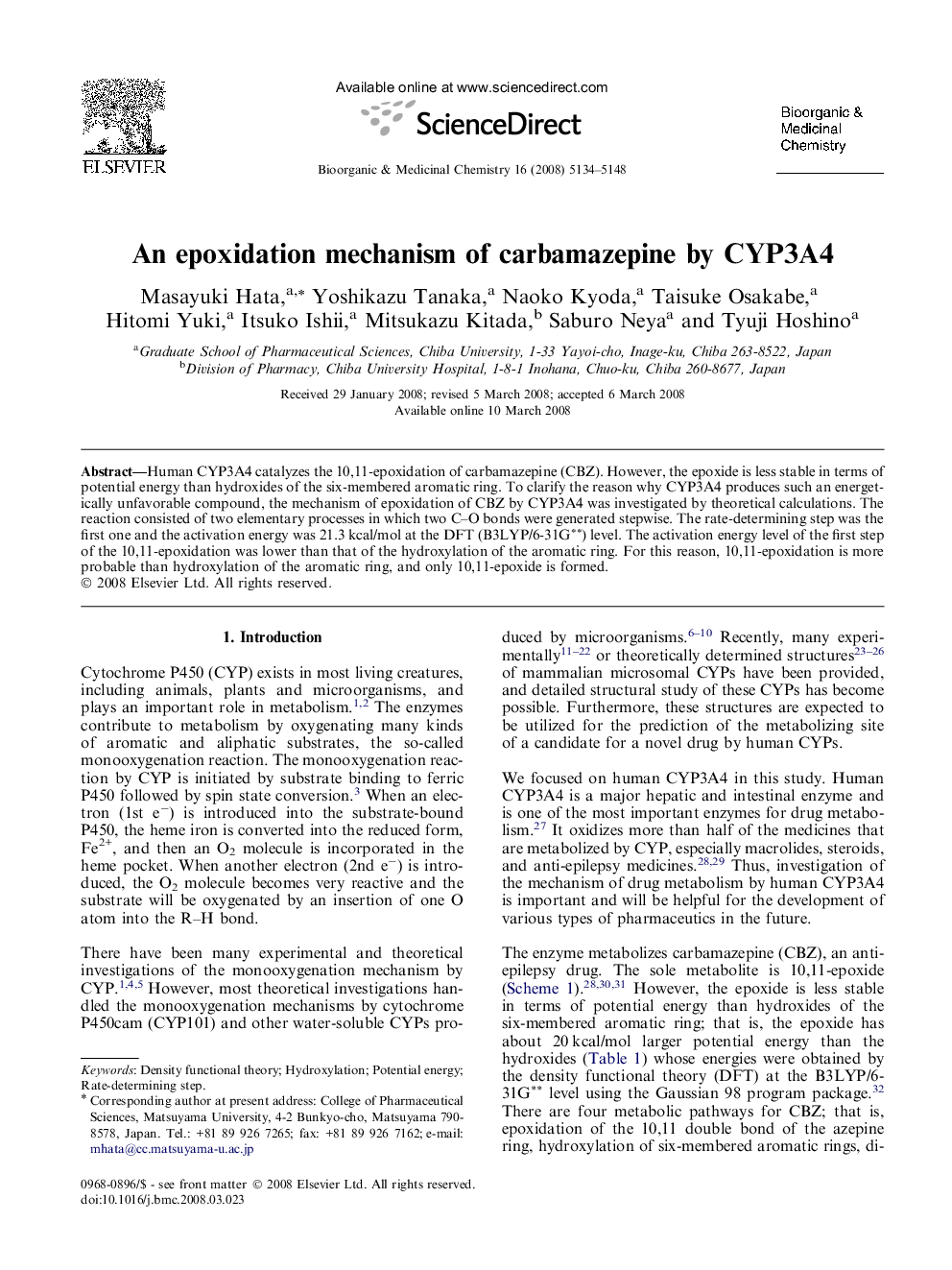| کد مقاله | کد نشریه | سال انتشار | مقاله انگلیسی | نسخه تمام متن |
|---|---|---|---|---|
| 1363910 | 981524 | 2008 | 15 صفحه PDF | دانلود رایگان |

Human CYP3A4 catalyzes the 10,11-epoxidation of carbamazepine (CBZ). However, the epoxide is less stable in terms of potential energy than hydroxides of the six-membered aromatic ring. To clarify the reason why CYP3A4 produces such an energetically unfavorable compound, the mechanism of epoxidation of CBZ by CYP3A4 was investigated by theoretical calculations. The reaction consisted of two elementary processes in which two C–O bonds were generated stepwise. The rate-determining step was the first one and the activation energy was 21.3 kcal/mol at the DFT (B3LYP/6-31G∗∗) level. The activation energy level of the first step of the 10,11-epoxidation was lower than that of the hydroxylation of the aromatic ring. For this reason, 10,11-epoxidation is more probable than hydroxylation of the aromatic ring, and only 10,11-epoxide is formed.
To clarify the reason why CYP3A4 produces an epoxide rather than a hydroxide, the mechanism of epoxidation of carbamazepine (CBZ) by CYP3A4 was investigated by theoretical calculations.Figure optionsDownload as PowerPoint slide
Journal: Bioorganic & Medicinal Chemistry - Volume 16, Issue 9, 1 May 2008, Pages 5134–5148